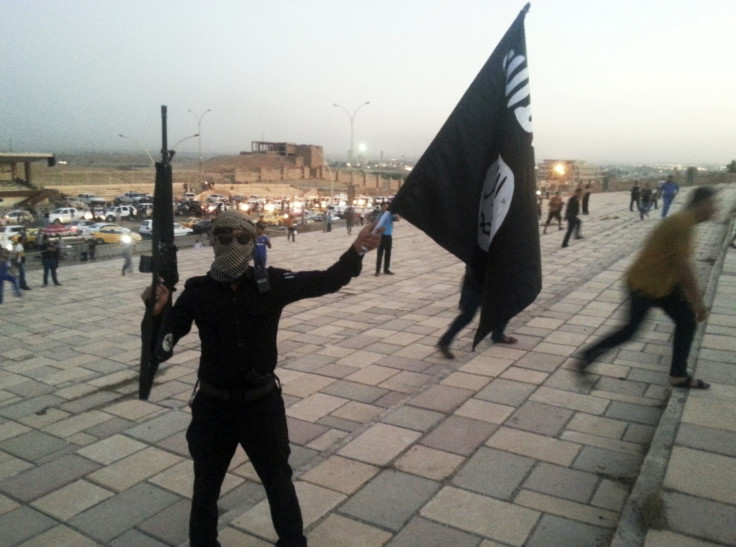Middle East Water Wars: Why Islamic State Wants Iraq's Dams

When ultra-violent militants sliced through the outskirts of Iraq's northern capital of Mosul in June, central government soldiers quickly melted away into the southern desert like a mirage.
For the grateful incoming fighters, the only reminder of their presence was an abundance of hastily discarded military equipment.
Videos of triumphant militants testing out their newly acquired Humvees were quickly uploaded to social media.
Days later, these clips were supplemented by gruesome photographs of alleged mass executions, a grisly fate for the security forces that did not flee, shared to spread fear among would-be opponents.
The Islamic State (formerly known as Isis) had captured the Western world's attention through its sheer brutality and its austere interpretation of Islamic law. Yet, the group's ambitions for the region's energy infrastructure present a far more troubling prospect.
The Battle for Iraq's Water Supply
Following the Islamic State's capture of the Kurdish majority city of Sinjar in early August, a familiar scenario repeated itself. The raising of the black flag, gruesome images of dead enemy fighters and religious proclamations ordering conversion were circulated online.
Reports also emerged that the Islamic State had launched attacks on Iraq's two largest dams.
When the Americans invaded in 2003, securing the Haditha Dam, located on the Euphrates river, was one of their top priorities.
The dam is the second largest in Iraq, and contributes around a third of the country's electricity supply. Moreover, energy experts agree that releasing water from the dam could potentially flood wide regions of the country, destroying all in its path.
"Isis already uses water as a weapon. It has previously stopped the water flow and dried the river course from Fallujah and downstream," an expert on Iraqi energy told IBTimes UK.
"All the cities to the south of Haditha and on the course of the Euphrates," could potentially be flooded, if Isis were to release water from the dam in a worst case scenario. "The wave might reach regions of Baghdad, as Iraq, especially in southern parts, is a very plain country", the expert said.
The group has also launched an assault on the country's biggest dam, located outside Mosul on Iraq's second major river, the Tigris.
The dam provides electricity to Mosul's 1.7 million residents and its capture would amount to a major loss for Kurdish forces that have countered the Islamic State advance.
"Definitely the dam is very important and Isis will not do anything to harm it based on understanding this. Isis will use as a pressuring card as by controlling Haditha dam and Mosul dam Isis will have control over 70% of electrical power of the country. So it is not only water but it is also electrical power," said the London-based expert.
The Islamic State
The attempt to seize the dam is indicative of the group's careful strategic planning that has fuelled their rapid unchecked success.
Formed during the insurgency that was born of the US-led invasion in 2003, the Islamic State is led by the charismatic Abu-Bakr al-Baghdadi.
With rebel-dominated eastern Syria effectively lawless by 2012, Baghdadi spotted an opportunity to seize territory and increase the Islamic State of Iraq's power base. Baghdadi's men crossed the border to fight alongside the al Qaeda affiliated Jabhat al Nusra in late 2012.
The coalition was an effective force but Baghdadi's forces were eventually expelled by the Qaeda leadership after Baghdadi attempted to merge the groups under the banner of Isis.
Moreover, the Qaeda leadership was uncomfortable being associated with Baghdadi's extreme, indiscriminate use of violence and his ultraconservative interpretation of Islam.
After publicly divorcing, the two groups fought increasingly brutal battles against other rebels and each other in Syria.
Energy Wars
Baghdadi's forces fared well in Syria, increasing the territory under its control and seizing a range of energy infrastructure, including waterways and oil production facilities.
By June 2014, the Islamic State controlled all the main oilfields in eastern Syria, as well as the major gas fields.
According to a Carnegie Endowment report, Syria's oil producing regions were generating up to $50m in monthly revenue for the group.
The militants also exploited water resources to exert pressure on communities. Syria's Euphrates Dam, controlled by the Islamic State, is the home of the country's largest hydroelectric plant.
Overuse has drained the nearby Lake Assad to record-low levels. The lake, which supplies drinking water to around 5 million people, is dangerously close to drying up. Controlling the facility gives the militants clout with the Syrian government and an alarming level of control over the livelihoods of millions.
With the opportunity to wield that kind of power in Iraq at stake, the battle for the country's biggest dam is likely to rage on.
© Copyright IBTimes 2024. All rights reserved.























